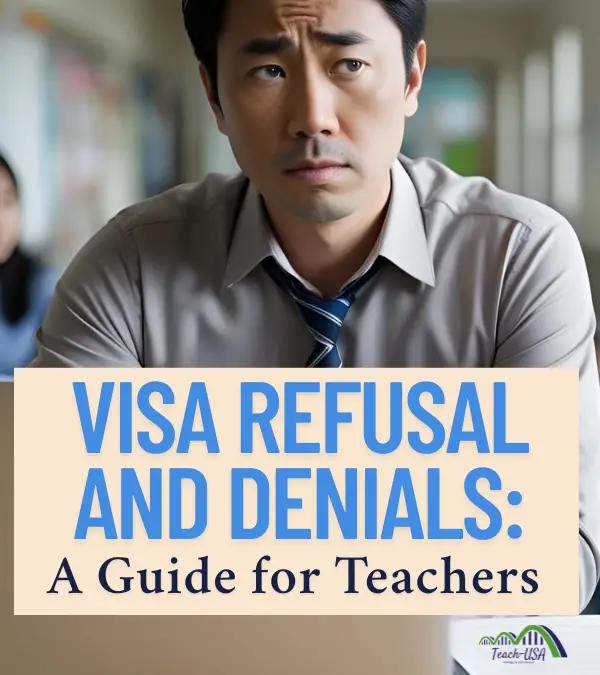Getting a U.S. teaching job is a dream.
But what if your visa doesn’t get approved? 😟
Visa refusals can be heartbreaking—but they’re not always final. Many Filipino teachers receive a 221(g) or other refusal notice, and still end up working in the U.S. later.
Let’s talk about what these visa codes mean—and what you can do next.
What Is a 221(g) Visa Refusal?
A 221(g) is not a denial—it’s a temporary refusal under U.S. immigration law.
This usually means your visa application is missing something, or the officer needs more time or documents to decide.
You might be asked to:
- Submit more paperwork
- Wait for administrative processing
- Get clearance from a U.S. agency
Important: You don’t need to reapply or pay again. Your application is still active.
Other Common Visa Refusals for Teachers
1. 214(b) – Lack of Strong Ties to Home Country
This is a real refusal, often issued when the officer believes:
- You may overstay in the U.S.
- You don’t have enough proof you’ll return home
- You couldn’t explain your ties well in the interview
📝 What to do: Strengthen your home country ties (job, property, family), and reapply with a better explanation.
2. 221(g) – Missing Info or Admin Processin
As mentioned above, this is common for J-1 and H-1B teachers.
📝 What to do: Submit the requested documents ASAP. Then, wait. It could take days to months.
3. 212(a) – Inadmissibility (Rare)
This usually means there’s a legal or medical issue, like:
- Past visa fraud
- Criminal records
- Overstay history
📝 What to do: This may require a waiver and help from a qualified immigration lawyer.
What Teachers Should Do After a Refusal
✅ 1. Don’t panic
Refusals can be frustrating, but they’re not always the end.
Many are temporary or can be overcome with the right steps.
✅ 2. Know your refusal cod
Your visa refusal letter will tell you the code (like 221(g), 214(b), or 212(a)).
Each one means something different—don’t guess!
✅ 3. Ask your sponsor or school for support
Sponsors may be able to help with reprocessing or explaining the issue.
Some may also help escalate if it’s been stuck in admin processing too long.
✅ 4. Consider reapplying or switching pathways
Some teachers who get 214(b) later apply again with stronger documentation.
Others consider Canada or other countries with more straightforward PR options.
✅ 5. Consult a lawyer if it’s seriou
If your case involves 212(a) or repeated refusals, don’t go it alone.
Talk to an immigration attorney who has experience with teacher visas.
Real Talk: Refusal ≠ Rejection of Your Dream
Visa delays and denials are painful but fixable. Many successful J-1 and H-1B teachers were once denied, paused, or put on hold.
Don’t let one refusal define your story.
With faith, action, and the right support—you can still make it.

